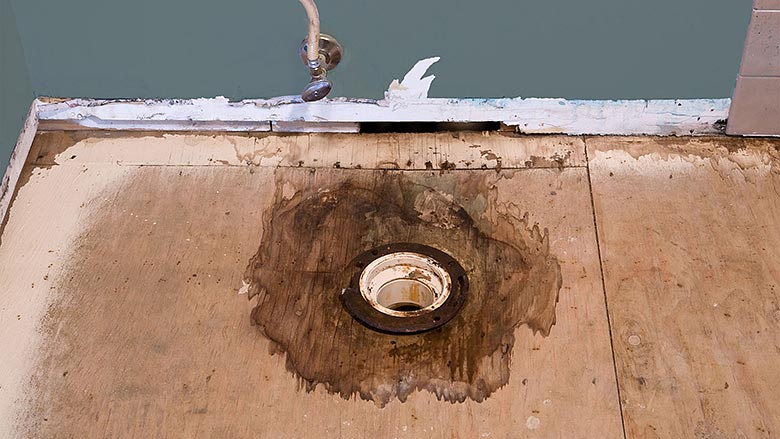Ways to Fix a Water-Damaged Wall in the Bathroom
Find Out MoreAre you searching for information and facts concerning How to Repair and Prevent Bathroom Water Damage?

The restroom is very at risk for damp buildup and possible water damage because of the constant use of water in it. This post supplies easy assessment strategies to help finding water damages hazards.
The regular use water in the bathroom makes it incredibly at risk for moist build-up and also potential water damage. By checking it regularly, you can reduce water related damages.
The following set of assessments is very easy to perform and ought to be done when in every 3 months in order to maintain your bathroom in good shape as well as to stop possible water damages triggered by the tub, the shower, pipeline joints as well as plumbing, sinks, closets, and also the toilet
Do not overlook doing these assessments and also be thorough while performing them. Keep in mind that these easy evaluations can conserve you a great deal of cash by giving very early signs for water damages
Tub and also Shower
The shower and also bath tub call for special attention and maintenance. Inspect the ceramic tiles as well as replace if broken. Make certain that there is no missing out on grout between the ceramic tiles. Examine as well as replace broken caulking at joints where the walls meet the floor or the bathtub. Clogged drains and pipes troubles will certainly protect against the bath tub from drying out as well as might suggest major issues below the bathtub. Consult with a professional immediately to stop architectural damages. Focus on discolorations or soft areas around the bathtub wall surfaces as they might suggest an interior leak.
Plumbing
Signs for water damage are tough to find considering that a lot of pipes are installed inside the wall surfaces.
Pay unique interest to flooring and wall surfaces wetness as well as stains as they might suggest an unnoticeable plumbing problem. Examine dampness levels in adjoining areas also.
Sinks and Cabinets
Sinks and closets are subjected to moisture and also moisture daily and also are commonly neglected. Evaluate frequently under the sink and on the kitchen counter over it. Repair any kind of drip in the trap as it may recommend drain troubles. Browse the sink, slow draining pipelines may indicate an obstructed drain. Change sink seals if they are broken or loosened.
The Bathroom
The toilet is an at risk water junction. Examine the water lines as well as search for leakages around the toilet seat, in the pipe, and under the water container. If you discover any kind of indications of moisture on the flooring around the toilet, look for leaks in the toilet edge and storage tank seals.
Be aware that hanging bathroom bowl deodorants raises the possibilities for obstructions.
Water Damage Signs In The Bathroom To Avoid Cleanup
Musty smell
This is one of the easiest signs to catch because musty smells are so odorous. The damp, earthy, moldy smell should be a big red flag. The smell will develop when moisture gets trapped in surfaces, and begins to facilitate mold growth. Leaking pipes under cabinets, inside walls, and behind shower fixtures will cause moisture to stay trapped and not dry, which will lead to mold growth and spread. As soon as you notice any musty smells in your bathroom, have it checked for hidden water damage and cleanup signs.
Visible mold
If the smell isn’t there to give it away, sometimes you will actually see mold growth. Finding mold in your bathroom is a serious problem, because mold is very harmful to your health. By the time mold growth is visible, it also means that water damage has already occurred and been present for some time. The only way the mold problem can be resolved is to find the source of the moisture and get it stopped. To safely and adequately remove mold, you need to have professionals handle the remediation. Do not waste any time in getting mold problems addressed, fixed, and sanitized so that you can protect you and your family from the many respiratory symptoms caused by mold exposure.
Damaged floors
Bathroom floors should be able to withstand some exposure to water while still remaining in good condition. However, when excess exposure or water leaks occur, they will begin to damage even the most water-resistant flooring. If you notice any cracking, bubbling, staining, or warping on your bathroom floors, there is probably a water leak somewhere causing the distortion. If you notice areas of the floor have become softer, or even have a spongy feeling, there is probably damage to the subfloor. Subflooring is typically made up of plywood. When plywood is exposed to water or moisture, it will absorb it. Once it has become saturated, the weight of the excess water will cause the wood to swell and soften. Check the floors in your bathroom frequently to catch any of these sings before they lead to damaged subflooring.
Changes on walls
When water leaks behind walls, it will cause changes in the drywall. Peeling plaster, blistering paint, and soggy wallpaper are all good indicators that excess water is building up behind the wall. Water leaking behind drywall will cause it to swell and be soft to the tough. If you start to notice gaps along the trim of your walls, or where tile meets the wall, it could also be a strong indicator that there is a leak behind the wall. Any changes, distortion, or damage on the walls should be evaluated as soon as you notice it to prevent further water damage and cleanup.

As a serious person who reads on How to Prevent Bathroom Water Damage, I figured sharing that topic was a good thing. If you enjoyed reading our page plz be sure to pass it around. Kudos for your time. Come back soon.
Services